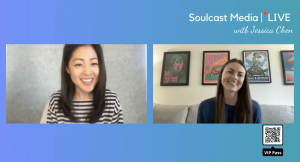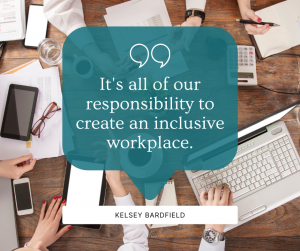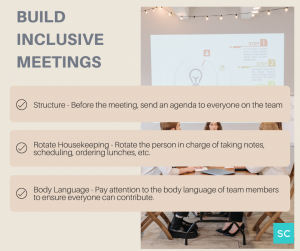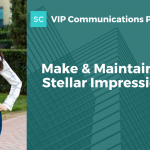The Power of DEI and communications
DEI has become a high-level initiative for many organizations over the last few years. This is great news because not only is representation important, it also makes for better business. According to a recent study, diverse companies enjoy 2.5 times higher cash flow per employee than less-diverse companies. That’s a win-win. But for some of us who want to take a more proactive approach to building an inclusive culture, how can we address this in the workplace?
 Our CEO and Founder, Jessica Chen, recently hosted a Soulcast Media | LIVE event on LinkedIn, where she interviewed Head of Inclusion and Employee Development, Kelsey Bardfield. They shared tips and personal stories about the power of DEI and how it relates to communications.
Our CEO and Founder, Jessica Chen, recently hosted a Soulcast Media | LIVE event on LinkedIn, where she interviewed Head of Inclusion and Employee Development, Kelsey Bardfield. They shared tips and personal stories about the power of DEI and how it relates to communications.
1. Our Impact
Everyone plays a role in creating a work environment that’s safe and inclusive. During the Soulcast Media | LIVE, Kelsey shared several ways we can positively impact our workplace:
- How We Treat Others – If we want to make the workplace a more safe and inclusive environment, we must consider how we treat others. For example, considering how some people may be naturally quiet, but it doesn’t mean they are less engaged. It may mean they have a different communication style.

- Use Our Voice – If we see a microaggression happening, we need to use our voices to ensure it stops. For example, if someone says, “Alex, you speak really good English.” We can ask the person [perhaps privately], why they made that comment. Most likely, the other person did not have ill intent, however, addressing it in private can ensure we are creating a place for all to feel safe.
- Educate Ourselves – Educating ourselves can help us better understand the people around us. For example, we can read books, watch LinkedIn Learning courses, or attend webinars to learn how to make our workplace more inclusive. It is important we consume resources and media from people of all races, ethnicities, and socioeconomic statuses.
When mindful of our interactions with others, we positively impact our workplace to make it more inclusive and safe.
2. Sensitive Communication
During the Soulcast Media | LIVE, Jessica posed the question, how can we become better and more sensitive communicators in the workplace? There are several ways we can ensure we are being more sensitive and conscious of others:
- Pave The Way – We may have a colleague on our team who is more quiet. We may have even seen their ideas get dismissed. If we sense our colleague is being overlooked, we can pave the way for them to share their thoughts in meetings. This may take some one-on-one conversations to see how they’d like to be supported, but making this outreach can be extremely impactful. When in meetings, we can then say, “I know Harrison has a great idea about how we can fix this problem; let’s reach out to him.” Or, if we are in a meeting, we can say, “Harrison and I were talking, and he has a great idea on how to fix this; Harrison, would you mind sharing your ideas?” When we do this, we pave the way for our underrepresented colleagues to have a voice.
- Inclusivity – Being sensitive communicators also means thinking of ways to be more inclusive of all. For example, during the Soulcast Media | LIVE, Kelsey shared how often company networking events are held after work hours and at bars. While these events are great for making connections, these events likely exclude those who have to go home to take care of family or those who don’t drink alcohol. Instead, Kelsey suggested speaking up and offering happy hours at the office and without alcohol so everyone can have a chance to be included.
3. Build Inclusive Meetings
Most meetings are structured around the loudest person in the room. Unfortunately, many people tend to be on the quieter side or don’t process information the same way, which puts them at a disadvantage. There are several ways we, as leaders, can structure our meetings to ensure they are more inclusive.
- Structure – We can be more inclusive by giving everyone an opportunity to prepare for a meeting properly. For example, we can send an agenda ahead of time. This will give everyone the chance to flesh out their ideas more completely because they had time to prepare.

- Rotate Housekeeping – Usually, one person is in charge of ‘housekeeping’ for the meeting. This can include scheduling meetings, taking notes, getting lunches, etc. To make meetings more inclusive, we can rotate the housekeeping duties so it isn’t the same person every time. This will give everyone on the team a chance to participate and contribute without having to focus on taking notes.
- Pay Attention To Body Language – Most meetings are set up to cater to the loudest person in the room. However, as leaders, we are responsible for ensuring everyone on our team can contribute. For example, one way is to pay attention to body language. In a virtual meeting, you may notice someone leaning forward and take themselves off mute because they want to say something. We need to recognize this and allow them to speak. When we do this, we acknowledge and make them feel like their voice matters.
In the end, having open communication and trust with other people on our team and in our workplace is critical. It’s all of our responsibility to create a more inclusive workplace.
Check out Jessica’s Youtube Channel if you want to see the full version of this Soulcast Media | LIVE conversation.
___
Whenever you’re ready, there are 3 ways we can help you:
- Discover your communications style, so you know where to start. Over 4,000 people have found theirs here.
- Attend our monthly communication workshop to build communications confidence (new topics: public speaking, advocating for yourself, building credibility, etc) here.
- Get your brand in front of 43k+ people by sponsoring our newsletter or Soulcast Media | LIVE LinkedIn events [contact: hello@soulcastmedia.com]











